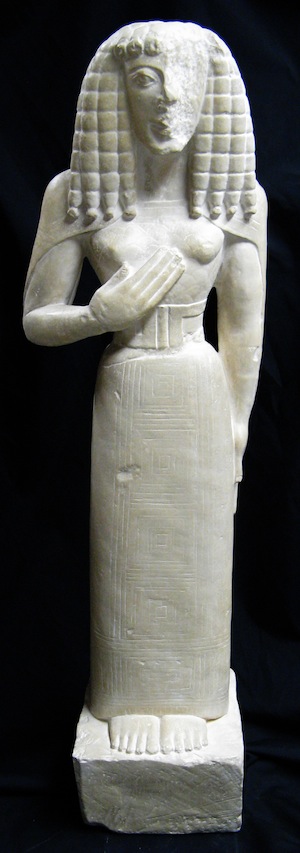Archaic Greek Sculpture

Lady of Auxerre
Archaic Greek
replica
date of the original: c. 650-625 BC
provenance of the original: found in a vault in the Museum of Auxerre in 1909; now in the Louvre, Paris
description: Female statue on base. Left side of face heavily damaged, as well as damage on the left shoulder and along the back. Elongated hands and feet. Daedalic type; Greco-Cretan style. Plaster replica; limestone original. Height 76 cm, width 23 cm, depth 16 cm.
The Lady of Auxerre was named after the little Museum of Auxerre, a small city in the vicinity of Paris, where, in the 19th century, a Louvre curator sighted her in the vault of that museum. No documents or information of any sort were available concerning the circumstances of her arrival there.
It was decided she was a specimen of the so-called Daedalic type of eastern origin cultivated in the Greek world of the seventh century BC. Typical, in this respect, is her wig (which could also be Egyptian) and triangular face, while her dress is of the ancient Cretan type.
The Daedalic type is characteristic rather of minor arts--almost the only type of art existing during this so-called orientalizing period of Greek art. Conditions for monumental art were only in gestation. In any case, the Auxerre lady is composed of parts which, however attractive, lack the unity and harmony which will characterize and dominate Greek art after its evolution from its eastern roots.